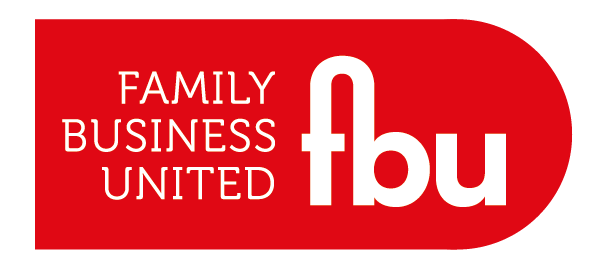Chancellor Unveils Tax-And-Spend Plan Amid Cost-Of-Living Pressures
- Paul Andrews - Founder & CEO, Family Business United

- 3 hours ago
- 4 min read

After months of anticipation in Westminster and beyond, the Chancellor has finally lifted the curtain on the government’s latest tax and spending plans in the Autumn Budget. Framing her approach as “fair and necessary choices to deliver on our promise of change,” she set out a package that attempts to strike a delicate balance between driving economic growth and easing the strain on households.
From frozen thresholds to new surcharges, here’s a comprehensive look at the major changes affecting individuals and businesses.
WHAT IT MEANS FOR INDIVIDUALS
Income Tax and National Insurance: Frozen Thresholds and New Rules
The Chancellor confirmed that the income tax personal allowance and key thresholds—£12,570 for the personal allowance, £50,270 for the higher-rate limit and £125,140 for the additional-rate band—will remain frozen until April 2031. Equivalent National Insurance (NIC) thresholds follow the same path, with the NICs secondary threshold of £5,000 also locked in until 2031. Scottish taxpayers should note that their own system of bands and rates already differs.
From April 2029, salary-sacrificed pension contributions above £2,000 a year will become subject to employer and employee NICs. Meanwhile, tax relief on non-reimbursed homeworking expenses disappears from April 2026.
Changes to Investment and Savings Taxation
Dividend tax rises are on the horizon: from April 2026, basic-rate taxpayers will pay 10.75% (up from 8.75%) and higher-rate taxpayers will pay 35.75% (up from 33.75%). Savings and property income will also face an increase of two percentage points from April 2027.
Other noteworthy shifts include the abolition of voluntary Class 2 NICs for individuals living abroad and the removal of the dividend tax credit for non-UK residents from 2026.
Investors in Venture Capital Trusts will see income tax relief reduced to 20% from April 2026, and image rights payments linked to employment will be brought squarely into the scope of income tax and NICs from April 2027.
Capital Gains Tax: Reliefs Tightened
CGT relief on disposals to employee ownership trusts will drop from 100% to 50% from November 2025. Incorporation relief will no longer apply automatically from April 2026, requiring an active claim. Anti-avoidance rules around share exchanges and reconstructions will also be strengthened.
Inheritance Tax: Allowances on Ice
The government is freezing the inheritance tax nil-rate band (£325,000), residence nil-rate band (£175,000), and the forthcoming £1 million agricultural and business property relief allowance for an additional year, stretching to April 2031. That combined APR/BPR allowance will be transferable between spouses and civil partners. A £5 million cap will be introduced for relevant property trust charges in historic trusts created by former non-doms.
Other Personal Finance Changes
A new High Value Council Tax Surcharge, commonly being referred to as the 'Mansion Tax' will hit owners of English homes worth £2 million or more starting in 2028, costing between £2,500 and £7,500 annually and rising with inflation.
Cash ISA holders under 65 face a reduced allowance of £12,000 from 2027, although the overall ISA cap remains £20,000. New London Stock Exchange listings will enjoy a three-year exemption from Stamp Duty Reserve Tax.
Additional measures include expanded Air Passenger Duty on private jets, relief for charitable goods donations, and a settlement opportunity for those with outstanding loan charge liabilities.
WHAT IT MEANS FOR BUSINESSES
Capital Allowances and Investment Incentives
Businesses will welcome a new 40% first-year capital allowance from January 2026. However, the main writing down allowance rate falls from 18% to 14% from April 2026.
Zero-emission vehicles and electric charge-points retain their 100% first-year allowances until 2027, encouraging continued investment in green technologies.
Restrictions on surplus Advance Corporation Tax (ACT) will be scrapped from 2026, freeing companies to make greater use of historic balances.
Tightening and Simplifying Corporate Tax Rules
Transfer pricing, permanent establishment, and Diverted Profits Tax regimes will be simplified for accounting periods beginning in 2026. Multinationals will also need to file an annual International Controlled Transaction Schedule from 2027, increasing transparency around cross-border transactions.
Private hire vehicle services will be removed from the Tour Operators’ Margin Scheme in early 2026, and VAT rules will shift to apply the standard rate to certain disability scheme motor-vehicle lease top-ups from July 2026.
A welcome development for charities: from April 2026, business donations of goods to charitable organisations for distribution or service delivery will benefit from new VAT relief.
Support for Growing Companies
The Enterprise Management Incentive scheme will expand in April 2026, offering more companies the chance to reward employees with tax-advantaged share options. Limits on funds raised through EIS and VCT investments will also rise, reinforcing the government’s push to stimulate innovation and entrepreneurial growth.
The Bigger Picture
The Chancellor’s statement signals continuity in some areas—particularly through long-term threshold freezes—while introducing a suite of adjustments designed to refine the UK’s tax landscape. Households will feel some measures more sharply than others, especially increased dividend taxes and the erosion of allowances over time. Businesses, meanwhile, are offered both carrots and sticks: investment incentives on one side, compliance tightening on the other.
Whether this package truly delivers on the government’s promise of “change” remains to be seen. But for now, the direction of travel is clear—and the detail matters more than ever.
We do need to see more long term support for family businesses and their growth agenda to enable them to continue to think beyond the short term and plan to create sustainable family businesses for generations to come.








%20copy%20(4)%20copy%20(1)%20copy%20copy%20(1)%20copy%20(1)-Medium-Quality.jpg)



.png)
























